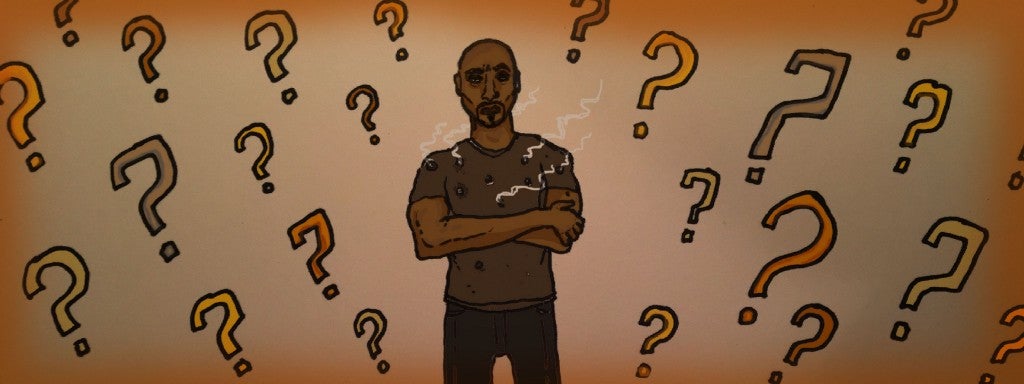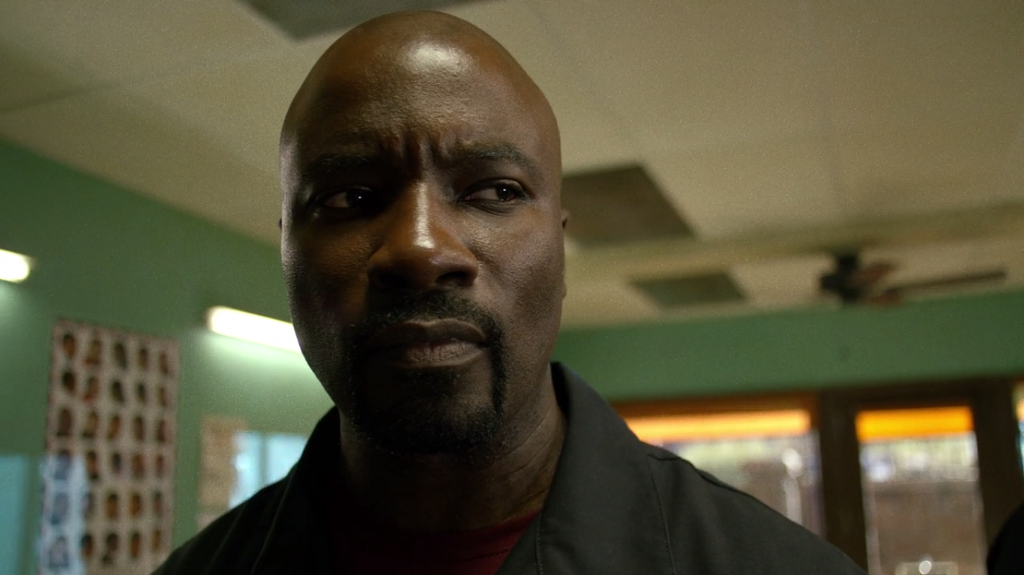When Netflix’s trailer for its newest Marvel superhero series Luke Cage was released in early August, it’s titular hero was immediately heralded as the “Superhero for the Black Lives Matter Era”. This show was one that “Doesn’t Shy Away From the #BlackLivesMatter Movement”, wrote Salon. Rather the character was “Perfectly Suited for the Black Lives Matter Era”, added The FADER—stirring a kind of excitement that comes with the promise of representation and the anticipation of a conversation many have been dying to have.
This assertion was so striking thanks to the era in which Luke Cage was born — during the Blaxploitation era in the late 60’s, early 70’s, Marvel leaned on black bodies as well as black culture to create heroes (and villains) to fuel narratives. This was to the delight of the masses, who ate these tropes up during a time where integration was only beginning in many parts of the U.S. Luke Cage joined characters like The Falcon, Blade and Black Panther as part of Marvel’s venture into the genre.
Two weeks after premiering—ample time for hungry Netflix audiences to gobble up the first season’s 13 episodes—the show doesn’t live up to those expectations. There’s something missing. In 2016, a show like Luke Cage should grapple with the issues of 2016: and the lived realities of black people in America. Showrunner Cheo Hodari Coker addressed why it doesn’t tackle these issues, admitting to Esquire: “This thing was written in early 2015. Black Lives Matter hadn’t really emerged in the public consciousness so fully at the time they were making this. It’s only topical from the standpoint that people are so aware of all these different elements that are happening that now, all of a sudden, it stands out.” Luke Cage feels dated, because it’s literally dated. But topicality aside, there is a much more straightforward issue with the inaugural Netflix season: it lacks depth.
Luke Cage is corny, and that is to say nothing of his feelings about “the n-word”, how thinks women should dress (see the scene where he throws shade at Detective Misty for wearing a “short dress” to a club) or his propensity to say problematic shit like, “Everybody has a gun, nobody has a father.” In trying to create a character who only wishes to put his checkered past behind him and move on, the writers for the series, in (perhaps an attempt to make Cage “mysterious” in the same vein as Daredevil or even Batman) instead made him just plain boring. We learn more about the man of few words in the brief cameo he had on Jessica Jones than we do in the entire first season of his own namesake show. When we do learn about Cage as a person, it’s through his mostly romantic relationships with women — who tend to be way more engaging than he is.

The more important relationship in a superhero tale is the one between the hero and their villain. Compared to that of Jessica Jones and Kilgrave (David Tennant), the mindcontrolling rapist and mass murderer villain, Cage’s relationships with his villains lack a level of understanding and a connection (however twisted) that informs their dislike of each other. Cage and Cottonmouth (Mahershala Ali) don’t have enough shared history to justify their beef. (They mostly take shots at each other mostly after Cottonmouth loses control of his headquarters, “Fort Knox” to Cage.) Our superhero doesn’t even know who the second villain is (name censored to avoid spoilers.) until nearly the end of the season.
Just as much as the Netflix reboot’s lack of depth is bothersome, it is also understandable to a degree. Luke Cage got retooled for a different climate in the early 1990s, after spending some time as an exploitative parody in the form of 1972’s comic book series, Luke Cage, Hero For Hire. 1992’s Cage series lasted for little more than a year and saw 20 total issues in total — essentially, the character’s most notable, solo run up until this point. He was featured in other comic anthologies such as Heroes for Hire and the 2010 iteration of the Avengers, New Avengers. Even compared to Daredevil (which had 380 issues from 1964–1998 and another 119 from 1998–2008), there just isn’t the same kind of catalog to call on and pull from to create his world. The difference is stark and the drop off in quality is undeniable.
This more modern, wholly less racist, 1990s version of Cage is still relatively new when compared to other Marvel Universe heroes —take Spiderman, X-Men or Captain Marvel — with history dating back as far as the 1960s. In comparison, Cage lacks as much of a history as many of his counterparts — allowing the writers of Netflix’s Luke Cage more freedom to adapt him to 2016.
Perhaps the creators of Netflix’s Luke Cage banked on the references to black culture and the creation of a black world within the Marvel Universe as something that would be able to carry the show on its own. However, in a culture where black television is as prevalent and outstanding as it’s been since the mid-1990s, this simply isn’t enough. We’ve got shows like FX’s Atlanta and HBO’s Insecure premiering this year, with standbys like Being Mary Jane, Blackish, and Queen Sugar with no drop off in depth or fullness of character. It’s no longer enough to simply show up and represent people of color — watching Luke Cage, one gets the feeling that Marvel had to fulfill some kind of diversity quota, rushing this show and allowing its story to suffer. Being a “black superhero” isn’t enough, anymore.
